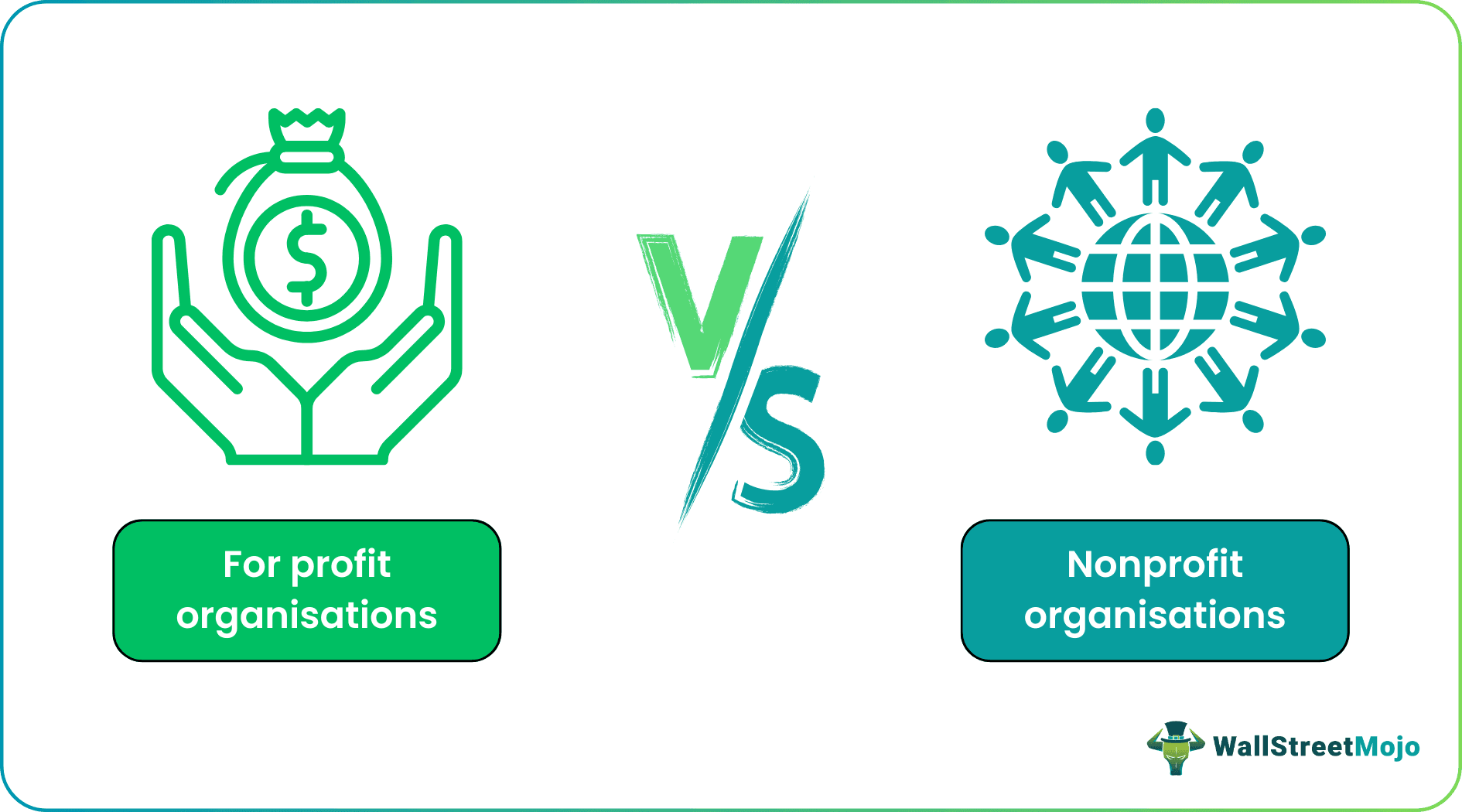Table Of Contents
Difference Between Nonprofit and For Profit
Nonprofit Organizations are those incorporated not for earning some income from their activities. Rather their primary motive is to enable activities that are generally for aiding or advancement of the society at large and are not required to pay taxes. In contrast, For-Profit Organizations are those entities incorporated with a primary objective of earning economic and monetary benefits either directly or aiding in that process.
Many individuals believe that nonprofit organizations don’t make any profit. It is a myth. And only for-profit organizations make a profit. The actual difference doesn’t lie in making profits; rather, it lies in handling them.

- For nonprofit organizations, society comes first; personal motives come next. For-profit organizations, it’s just the opposite. Other than handling the profits, these two organizations are different in scope also.
- For nonprofit organizations, the sources of revenue are subscription, membership fees, donation, etc. For-profit organizations, the sources of revenue are selling goods and services. Even the seed capital for nonprofit organizations comes from the government grant, donations from HNI (high net-worth individuals), etc. Whereas in for-profit organizations, the seed capital is usually provided by the partners or the business owners.
- If we talk about financial statements for nonprofit organizations, cash flow statements, income statements, and balance sheets are used. And if we think about nonprofit organizations, we use receipts & payments accounts, income & expenditure accounts, and balance sheets.
- In regards to taxes, for-profit organizations need to pay taxes. Nonprofit organizations are exempted from paying any taxes. Since the profit-making organizations make profits for their benefits, the Government levies taxes on them. But because nonprofit organizations make profits to help society at large, they're given the benefit of no tax payment.
- The culture of these two types of organizations is also quite different. In the case of profit-making organizations, the culture is all about deadlines, finishing projects as quickly as possible for clients, adhering to different KPIs (key performance indicators). On the other hand, the organizational culture is quite different for nonprofit organizations. The culture values the members' contributions and how much each member can contribute even beyond the daily schedule of work.
- In the case of profit-making organizations, the ideal buyers are targeted. Otherwise, the motto of selling to the right audience will not be achieved. On the other hand, nonprofit organizations have a broad audience view. In most cases, people can join, contribute, become members voluntarily.
For Profit vs. Nonprofit Organizations Infographics
Let’s see the top differences between For-profit vs. nonprofit organizations.

Key Differences
- The for-profit organization is built to serve the business owners. The nonprofit organization is built to serve society at large.
- Profit organizations can be in a company, sole proprietorship, or partnership. A nonprofit organization can be in trust, clubs, society, committees, etc.
- Profit organizations make a profit by directly/indirectly selling goods or services. Nonprofit organizations can sell goods/services, mainly through donations, subscriptions, or membership fees.
- The financial statements prepared by for-profit organizations are the income statement, the balance sheet, and the cash flow statement. The financial accounts prepared for nonprofit organizations are the receipts & payment account, the income & expenditure account, and the balance sheet.
For-Profit vs. Nonprofit Comparative Table
| Basis for comparison | For-profit organizations | Nonprofit organizations |
|---|---|---|
| Purpose | To make profits for one's fulfillment. | To make profits for serving society. |
| Types of organizations | The organization can be a company, partnership, or sole proprietorship firm. | The organizations that are of nonprofit types are clubs, trusts, society, etc. |
| People that manage | Business owners, sole proprietors, or partners. | Trustees, governing bodies, or committee members. |
| Revenue source | The revenue source of this type of organization is selling goods and services. | The revenue sources of this type of organization are donations, subscriptions, grants, etc. |
| Seed capital arranged by | In the case of this type of organization, seed capital is arranged by the business owners or founders of the company/proprietorship firms. | In the case of a nonprofit organization, seed capital is arranged by sourcing government grants, asking for donations, etc. |
| Financial statements/accounts prepared | For-profit organizations, the income statement, the cash flow statement, and the balance sheet are prepared. | The receipts & payments account, income & expenditure account, and balance sheet for a nonprofit organization are prepared. |
| Profit transferred to | Capital account. | Capital fund account. |
Final Thoughts
Even if profit organizations keep the profit for their benefit, it serves many people through their products and services. And at the same time, even if nonprofit organizations are created to serve society, they may pay a salary to the trust's chairman.
